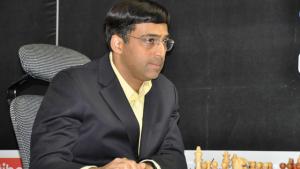
When to Strike - Part Two
Last week we were discussing the question of when to strike when you have an advantage, using some of my games from a recent tournament as examples. The question of when to attack and when to make small improvements/ prevent counterplay is a very difficult one. A mistimed attack is one of the big reasons people lose their advantage; mistimed attempts at counterplay are also a big reason why bad positions become lost positions.
In order to learn timing in chess you need to spend a lot of time and play a lot to develop your intuition. An important thing to keep in mind is that if you have a long-term, stable advantage then you can spend more time building up your position and preventing counterplay; while if you have a temporary advantage, then you are likely to lose it if you don't attack right away. For example, in my game with IM Ludwig (from last week's article) his advantage consisted in his slightly superior mobilization and my somewhat awkward pieces. However, a delay of just one move gave me the chance to put my position in order.
So, back to the tournament. After the fourth round of the Eastern Open I was not in the best of moods. I had spoiled an easily won ending against Ludwig and only drawn; in the following round I had completely lost control and lost against GM Kaufman from a slightly better position. After that bad day, I was just trying to salvage the tournament.
The next day I played against a national master, Andrew Samuelson. Andrew went to UMBC at the same time as I did, so I know him pretty well. He has a good knowledge of theory and calculates pretty well, but plays too quickly and perhaps loses concentration at some moments.
In this game I played an already quite risky opening very poorly, and was in serious trouble by move nineteen - so much so that I offered a draw despite the large rating difference and my need to win some games to get back into contention in the tournament. My opponent correctly refused the draw, but in doing so probably did not play the most dangerous move. After a further missed opportunity, I found myself in a passive position with little counterplay.
At this point I have a nice-looking knight on f5 and the White king is a little open, but that is it. Meanwhile, the Bf2 is effectively restricting the knight in a typical way. My other pieces can't do much and are tripping over each other. Since if I played the natural 23...Nce7 I would have to basically just continue with waiting moves after that anyway, I felt it was okay to set a trap with 23...Rad8!? . He could easily refuse the d-pawn and play a move like 24.Kh2, followed by preparing a pawn advance on the queenside. White's advantage is long-term, so there is no need to try to win immediately. I feel that most experienced players would not even look at the d-pawn; but my opponent decided to call my "bluff":
It can be tough to decide when to switch from patiently building up your game to concrete calculation, looking for an immediate win. Here, White's advantage was long-term, so there was no need to capture on d5 unless it was clearly winning. To some extent intuition needs to be a factor - I think most players would not even consider taking on d5 and justifying my previous move, especially since otherwise Black has no counterplay. If White is going to capture the pawn, it should be calculated very carefully.






